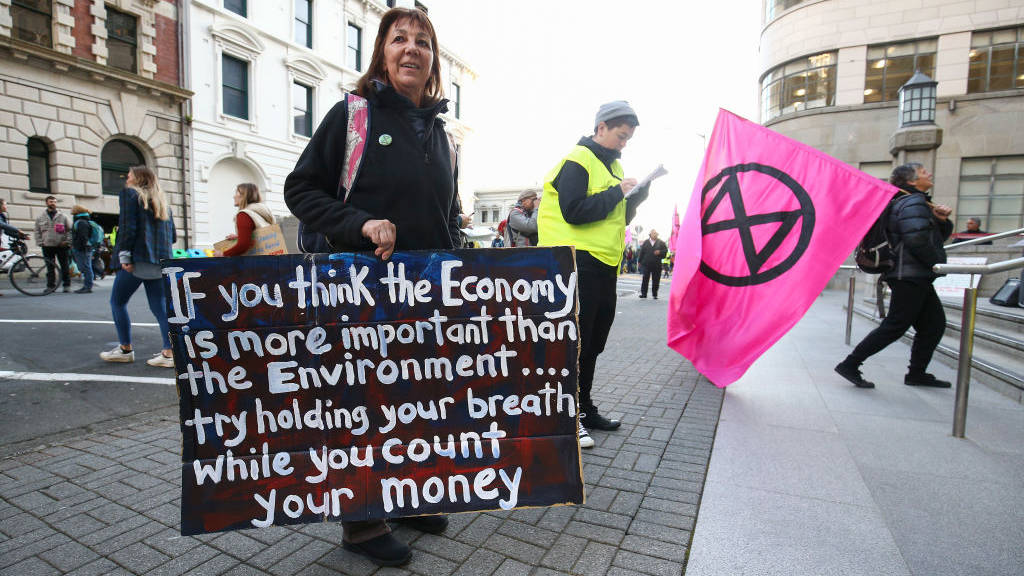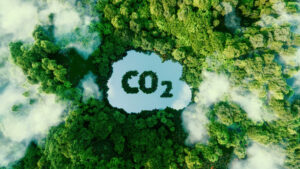Climate change is a multi-billion-dollar opportunity

Australians on the East Coast are wondering whether to hold their breath or inhale bushfire smoke and all that comes with it. Pic: Getty
Australians are frightened.
This year there have been bushfires followed by damaging hail storms in NSW and Victoria, followed by more bushfires.
In the last three years, Stockhead has heard firsthand accounts of plagues of starving, thirsty kangaroos and emus marching en masse into South Australian farmland, trying to escape droughts that have ravaged the centre and east coast.
And after years of warnings that native wildlife is under pressure from human and environmental factors, this year we discovered that some of the country’s most iconic animals — from koalas and rock wallabies to the platypus — could be endangered or are on the verge of extinction.
The experts, the most vocal, and the most affected are pointing to climate change as the culprit.
“Unfortunately, the chickens have come home to roost in that there’s no longer the possibility of denying the reality of climate impact … Australia is bearing a tremendous amount of the brunt,” former UN and White House scientist Dr Devra Davis told Nine Newspapers last week.
Yet the federal government remains reluctant to take a similar view, one that could not only assuage Australians’ fears of climate change but also open the floodgates to a multi-trillion dollar economic boom.
This is what climate change could cost
The word ‘billions’, and sometimes ‘trillions’, follow the headline numbers that studies place on the economic cost of not dealing with climate change.
Last year the Australia Institute reckoned that it’d be $130.5 billion a year once warming of 4°C had been reached. At the Melbourne Sustainable Societies Institute at the University of Melbourne it’s $535 billion by 2030, on figures they called conservative.
But those came before the Tasmania, South Australia, NSW and Victoria bushfires.
One analysis of Deloitte Access Economics’ costing method led to a price tag for the current conflagration of $100 billion.
State and federal governments have tipped in serious cash to rebuild, but it’s not enough action for voters and business leaders who are increasingly anxious about how they will navigate climate change in the future.
A Deloitte survey of 2000 global business and public sector executives found that 83 per cent of Australian business leaders cited tackling climate change as their generation’s responsibility to solve.
Two years ago that was just 7 per cent of Australian executives.
Seriously, a multi-trillion dollar opportunity
For years Australia and the world have been told another story in parallel to the cost-of-doing-nothing narrative: set up the frameworks to allow companies to spend now and the economic benefit will be enormous.
In 2018, a report from the Global Commission on the Economy and Climate said benefits worth $US26 trillion ($37.9 trillion) and 65 million new jobs could be created in the years to 2030 if the world made the “right choices” now.
Three Stanford university professors wrote in Nature that same year the projected benefits of climate change mitigation were more than 30 times what it would cost to meet the 1.5°C warming goal.
And last year the Global Commission on Climate Change found the rate of return on investments in climate change mitigation and adaptation to be “very high”.
“Our research finds that investing $US1.8 trillion globally in five areas from 2020 to 2030 could generate $US7.1 trillion in total net benefits,” it said in a report titled Adapt now: A global call for leadership on climate resilience.
“In other words, failing to seize the economic benefits of climate adaptation with high-return investments would undermine trillions of dollars in potential growth and prosperity.”
The latest figures come from the recent WEF conference at Davos and Thunderbird School of Global Management director-general and dean Dr Sanjeev Khagram, who says the market opportunities of climate restoration could feasibly be in the range of at least $US1-3 trillion per year by 2030.
Add in the broader economic, social, and environmental benefits of climate restoration and it could be $US3-5 trillion per year by 2030.
The next Netflix is in climate restoration
“Climate restoration” made its debut at a UN meeting in September last year; it refers to reversing the current trends of climate change.
Opponents of this kind of geoengineering suggest it creates a massive unknown risk: changing a system as complex as the climate could have unintended consequences.
But as governments fail to take quick or any action, it’s fast becoming one of the only options left.
Khagram says the technologies that might be the next Netflix or Tesla are still very early stage, but they are coming.
He cites Arizona State University’s and Silicon Kingdoms Holdings’ mechanical trees: a cluster of 12 can suck 1 tonne of CO2 from the atmosphere a day, and at scale that could cost as little as $US100 per tonne.
Concrete company Blue Planet has developed a commercially viable way to capture and permanently sequester CO2, as CO3 in the crystalline state, within limestone aggregate products sold for use in concrete.
“This market [for construction aggregates] could be large enough to remove and sell all the world’s excess CO₂ by 2050,” Khagram writes.
C2CNT is developing tech that can transform CO2 into carbon nanotubes, which are used in the Boeing Dreamliner and race cars and could be swapped in for copper wiring in electronics.
And Ice 911 is testing material that “could be used to make young, thick ice reflective” thus saving increasingly fragile Arctic sea ice.
Australia is slowly getting there
In spite of the policy vacuum in Canberra on this issue, Australia is tip-toeing towards being a ‘green’ economy.
The government is dusting off its technology investment roadmap, flagged by Minister for Energy & Emissions Reduction Angus Taylor in December, which could include carbon capture and storage (CCS), hydrogen, lithium production, biofuels and waste-to-energy.
Experts fear this is merely an opportunity for the government to pick winners aligned with its views and ignore the volumes of research on what it could do to reduce carbon emissions, reported Australian Energy Daily yesterday.
Particularly since a very similar roadmap was commission by the Turnbull government in 2016 and delivered by the CSIRO in 2017.
Morgan Stanley last year identified five industries it thought could thrive and drive Australia out of its current low-growth economic stagnation.
These industries are renewable energy, electric vehicles, hydrogen, CCS, and biofuels. All are massive investment opportunities with proven technologies and markets.
Renewable energy is already a substantial industry in Australia, providing slightly more than 21 per cent of energy generated in the National Energy Market, which covers the east coast, South Australia and Tasmania.
The Clean Energy Council says that at the end of 2018, 14.8 gigawatts (GW) of new generation was under construction or financially committed, representing $24.5 billion in investment and more than 13,000 jobs.
Although investment in the sector fell to $8.1 billion last year, down 40 per cent on the year before, wind, solar and battery power is now the cheaper energy option over building new coal plants.
Among the small caps already operating in this space are offgrid suppliers Renu Energy (ASX:RNE) and Tag Pacific (ASX:TAG).
Wind power companies Tilt (ASX:TLT) and Windlab (ASX:WND) have fended off a takeover and willingly accepted an offer, respectively, but both actions were taken in order to fully realise the value of their assets.
In November, Australia got a hydrogen plan, after the COAG Energy Council agreed to the National Hydrogen Strategy, expected to pave the way for a hydrogen economy.
The Western Australian government put $1.68m into seven renewable hydrogen projects this year to support the development of the fledging industry, while Tasmania, Queensland and Victoria are also positioning themselves as potential ‘hubs’.
Companies involved in the sector include Hazer (ASX:HZR), which is developing a green hydrogen method — a way to make the substance without using coal-fired power.
This is a sector with a long way to go however. National researcher CSIRO says it could be worth $11 billion to Australia by 2050, given the country doesn’t have any production infrastructure or use cases for it yet.
The electric vehicles play is also a mining play, as a section of the resources industry dukes it out for lithium sales contracts and bigger cobalt mines.
It’s not quite biofuels but waste management is becoming a key area, as Australia is forced to deal with its own trash at home rather than shipping it to China.
The economic and investment opportunity in climate restoration, mitigation and adaptation has been around for years, but the cost of not taking part became painfully clear for Australia this summer.
As the government slowly tries to close the gap between protecting business’ existing assets versus meeting the intensifying, at times panicked demands of its people, the answer as to whether climate change is a good deal for the economy is, now more than ever, obvious.
UNLOCK INSIGHTS
Discover the untold stories of emerging ASX stocks.
Daily news and expert analysis, it's free to subscribe.
By proceeding, you confirm you understand that we handle personal information in accordance with our Privacy Policy.








